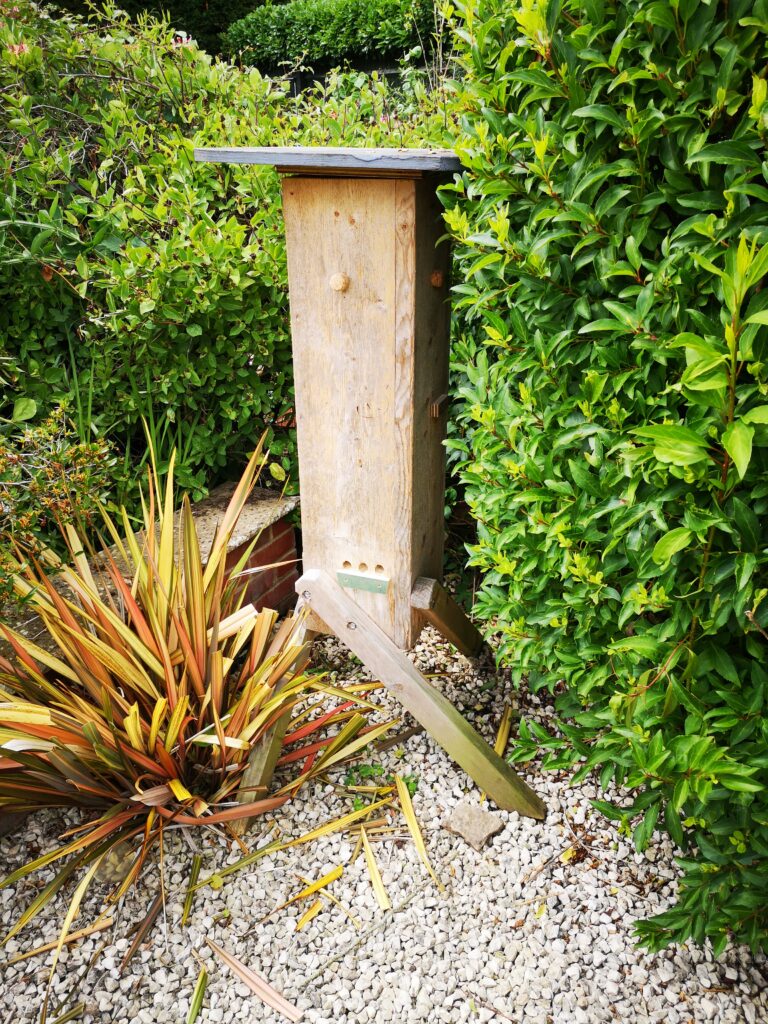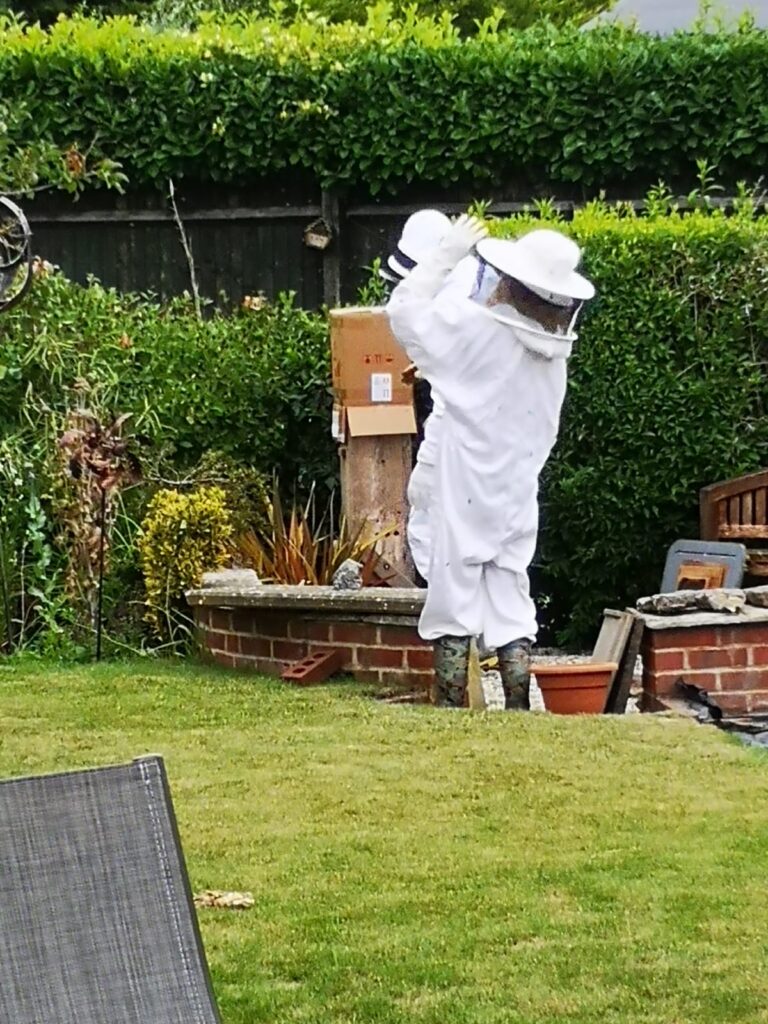No rhubarb crumble for lunch today
Three warm sunny days and my bees got itchy feet and swarmed yesterday. The hive is what I call a passive hive in that it provides a home for the bees and I make no demand on their honey. Free lodgings are given provided they pollinate my various fruit and veg production.
The hive is shown below and is mounted high on the wall of an adjacent building, well above flight paths. The central column is an original commercial item from Gardeners Beehive. (Note that Kevin at Gardeners Beehive is very dyslexic so please be patient and understanding when reading his website). The side boxes are additions to give more comb space. The right hand side box has a hinged door over a Perspex viewing window which is opened by the lever.

The bees had been unnaturally grumpy this week and I picked up a couple of stings. The first one occurred while in the veggie plot and started as a serious buzzing in my right hand side hear aid. This did not abate and stupidly I brushed at it and in the process my hearing aid flew out among the veg. The buzzing then came round to the left hand side and the second hearing aid ended up also in the veg.
I had had enough and headed out onto the lawn running tighter and tighter circles to shake off my attacker. Revenge was a sting under my eye which was very painful and tender for a couple of days. I recruited my wife to help me to find both hearing aids, one of which now had a damaged transducer cable. A trip to the audiologist followed. (There is some discussion about whether hearing aids give off some form of acoustic signal that attracts insects).
The second sting was while I was on the roof of our bungalow cleaning the solar panels. I try to keep them as clean as possible to get every last kW of energy. Regular downpours containing Sahara red dust work against me. Anyway I’m on the roof minding my own business when I felt something land on my head. Next minute I felt the sting. I must have been right in the flight line and the little devil must have got out of bed at the wrong side.
Yesterday while heading down to the veggie plot I heard the tell tale buzz of activity and sure enough a huge cloud of bees was vacating the hive and whirling around. It is quite impressive to see them dramatically exiting in high volume. However to my surprise the swarming mass only moved about 10 metres and settled on our rhubarb plant where it has remained overnight. This morning the scout bees are rushing back and forth and no doubt will be voting for the best location for their new home before the swarm heads off.

My wife duly informed me, in no uncertain terms, that rhubarb crumble was off the menu for Sunday lunch. There’s always hope that Spotted Dick might be the substitute…
Links to similar or related post are listed below : –





